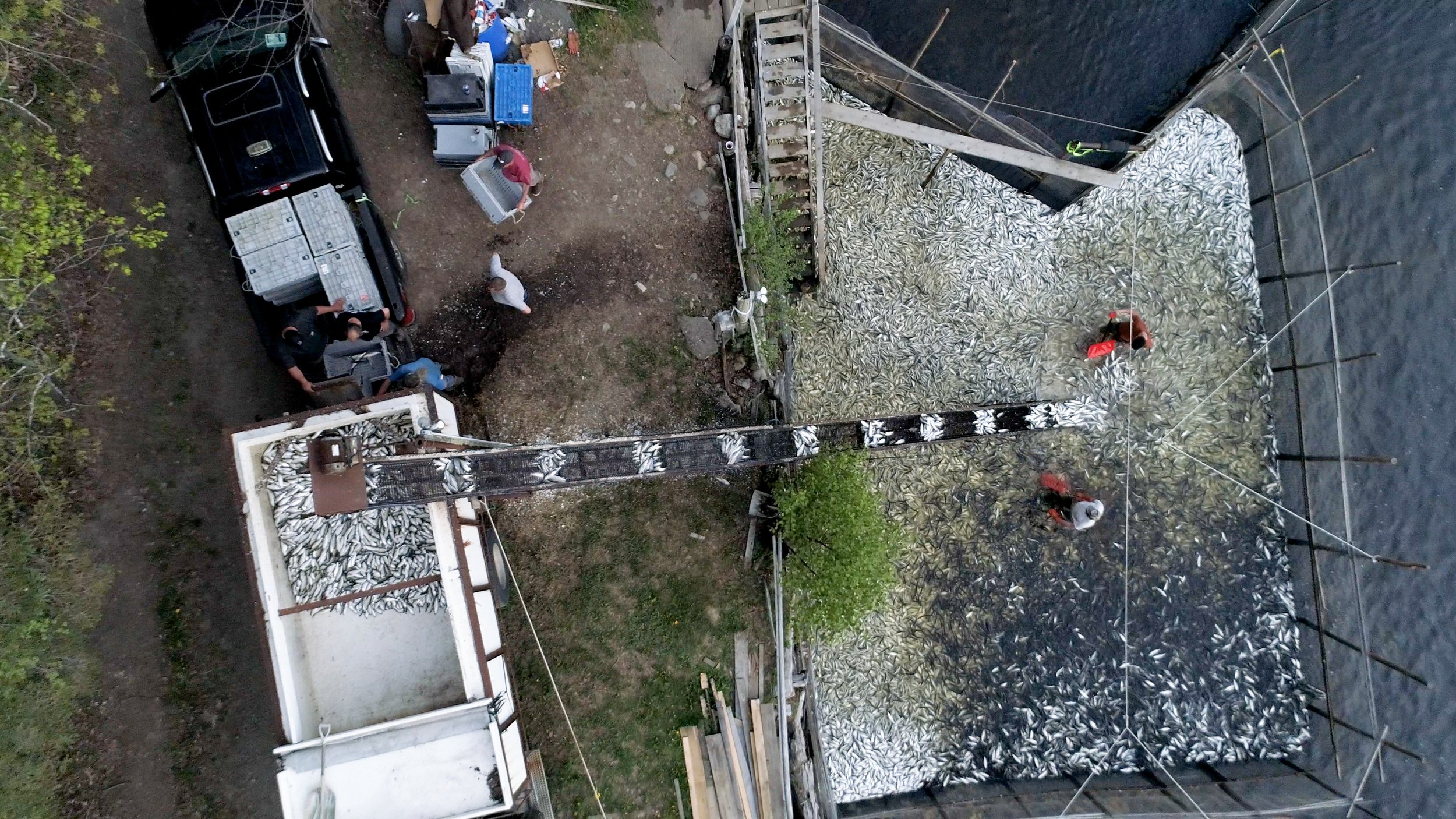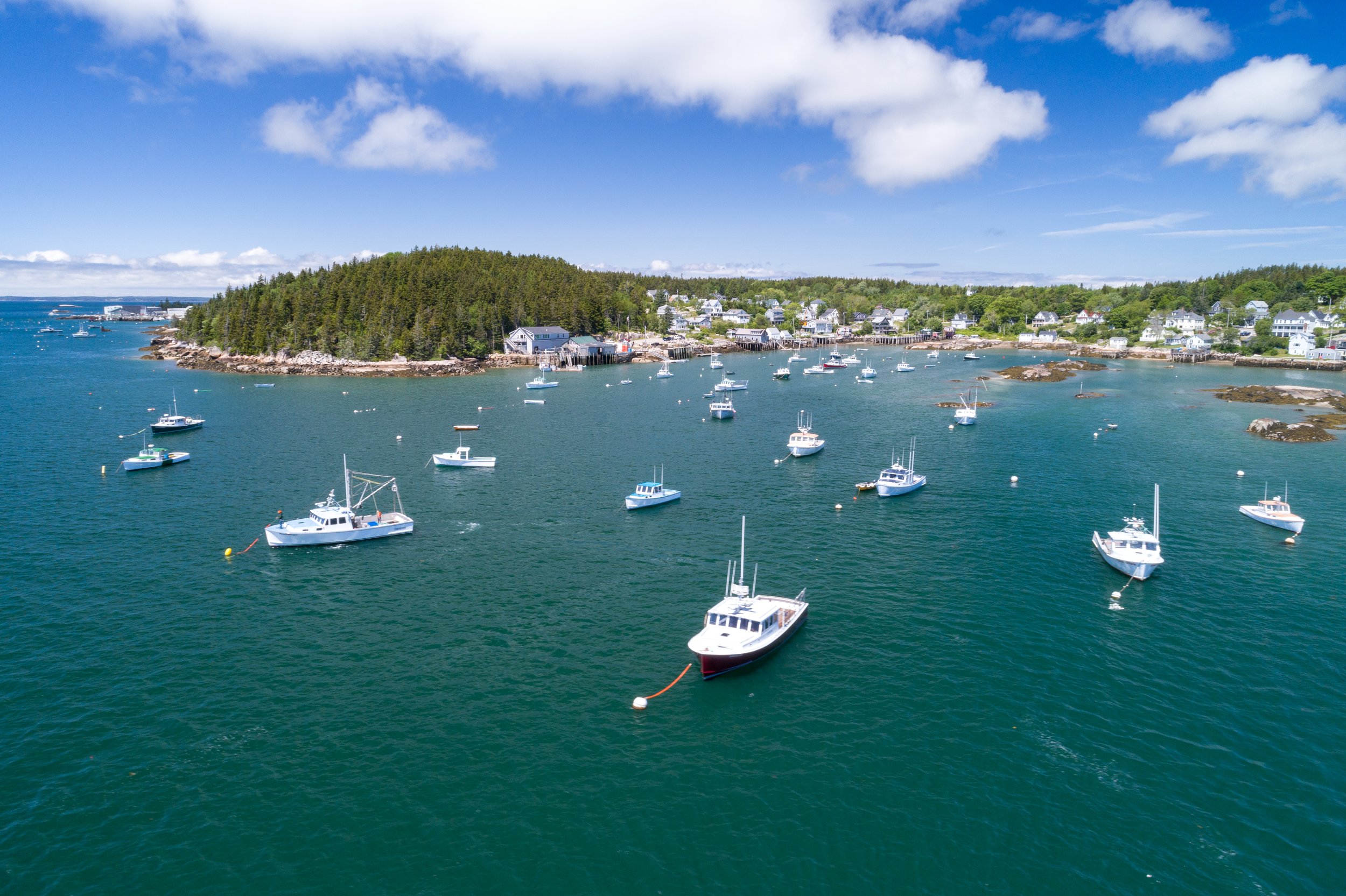
Harvest
Importance to Coastal Communities
It's easy to understand why river herring are important to coastal communities. At their most basic level the cultures and livelihoods that make up these communities are based on access to fish and the coast. River herring and other anadromous fish are a living representation of this connection between our communities and the sea.
Simply put, every spring, on a day that you can almost set your watch to, hundreds of thousands (and in some cases millions) of fish begin to return from a life at sea, to the freshwater and to our communities. Communities whose existence is based on fish and the ability of fish. It isn't hard to see how river herring have and continue to play a significant role in our culture and our values.
River herring, along with other “forage fish”, are, by name, food. They are bait used to harvest other fish (such as lobster and halibut) and to make a living, and are enjoyed as a traditional source of food in many communities. And while we continue to understand more of the important ecological role that these fish play in ocean ecosystems and food webs, one way to measure the socioeconomic value of these fish is through their harvest. That harvest is still important today and, in fact, Maine and northern New England is the last place where sustainably harvestable populations exist. And where harvests still exist, we find communities and individuals at the forefront of river herring stewardship. Harvesters and community members understand what it takes to retain and rebuild these populations, and are willing to do the local monitoring and management that the future of river herring requires. That is why this network is committed to these harvesters and this connection of people and fish.
Recreational and Commercial Harvests
Recreational harvest of river herring is still allowed in the state of Maine. Up to 25 fish per person per day may be harvested by dip net or hook and line from 6:00 am Sunday to 6:00 am Thursday (with fishing closed Thursday through Saturday). Recreational fishing is typically not allowed in streams where commercial harvesting occurs unless stated in a local management plan. If you are wondering whether you can harvest in your local stream, it's best to check DMR regulations here and contact a local marine patrol officer here.
Maine also continues to have a commercial river herring fishery. In 2021, there were 1,800,000 lb of river herring commercially harvested across 17 runs, valued at $722,000. If a town can show that they have a river herring run that can be sustainably harvested, and develop a plan that is approved at the state and Federal levels, they can then commercially harvest this local fishery. Municipal management plans are created with the Maine DMR and close coordination occurs between town and state officials. Typically, when a town receives the right to harvest a run, they create a leasing process where individuals bid on the right to harvest (usually one harvester is permitted per town). The town sets out guidelines for harvest in its management plan, and towns receive some compensation for this lease of the harvest. Under most lease agreements, the harvester is responsible for monitoring and sampling requirements to keep the run open, and for maintaining open and free passage for adult and juvenile migrations.. In this way, though it may seem counterintuitive, harvest can often be the essential piece of a puzzle that will keep a run going into the future.
Historically, “alewife wardens” and other similar positions can be found in town budget records as official town positions that dealt with harvest and the long term sustainability of these important local resources. In Massachusetts, herring wardens still play a critical role in stewarding local river herring runs, and meet regularly to share information through their own river herring network.
St. George River Alewife Harvest
Video produced by Knack Factory for Maine Coast Fishermen’s Association
Videos
Harvester Perspectives
Video produced by Julia Beaty and Maine Sea Grant


